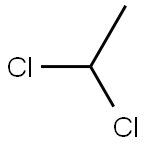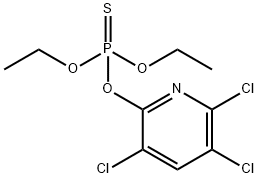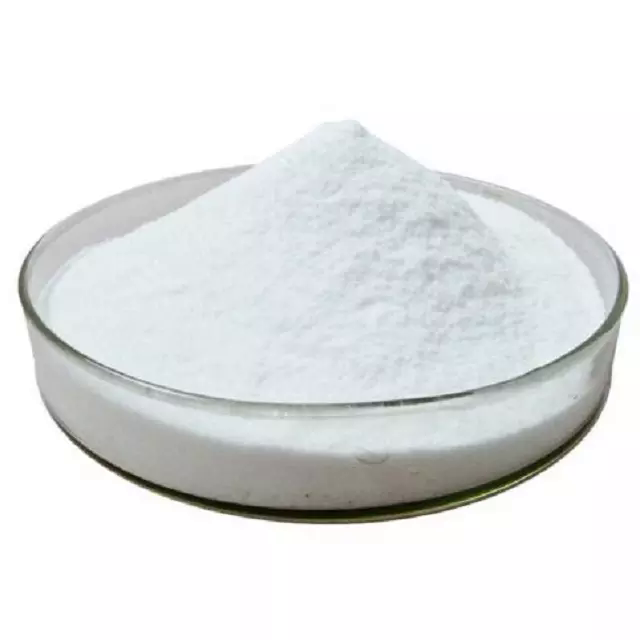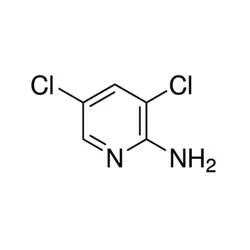2,3-Dichloropyridine
- CAS NO.:2402-77-9
- Empirical Formula: C5H3Cl2N
- Molecular Weight: 147.99
- MDL number: MFCD00006229
- EINECS: 219-281-8
- SAFETY DATA SHEET (SDS)
- Update Date: 2025-04-29 17:45:46

What is 2,3-Dichloropyridine?
Chemical properties
White to slightly beige crystalline powder
The Uses of 2,3-Dichloropyridine
2,3-Dichloropyridine is used as a reagent for the preparation of substituted 3-(5-membered heterocycle-carboxamido)pyridine derivatives for treatment of autoimmune and inflammatory diseases. Also in the synthesis, crystal structure and biological activity of novel anthranilic Diamide insecticide with propargyl ether.
Synthesis
2,3-dichloropyridine is synthesized from 2-chloronicotinic acid via amidation, Hofmann degradation, diazotization and Sandmeyer reaction.
Description
2,3-Dichloropyridine is a biochemical reagent that can be used as a biological material or organic compound for life science related research.
Structure and conformation
The complete mol-ecule of 2,3-Dichloropyridine, C5H3Cl2N, is generated by crystallographic twofold symmetry, which forces the pyridine N atom and the opposite C—H group to be statistically disordered. In the crystal, weak aromatic π–π stacking [centroid–centroid separation = 3.805 (4)Å and slippage = 1.704Å] leads to [100] stacks of mol-ecules. Short Cl···Cl contacts [3.334 (3)Å] are also observed. Colourless prisms were grown from ethanol.
Properties of 2,3-Dichloropyridine
| Melting point: | 64-67 °C (lit.) |
| Boiling point: | 242.42°C (rough estimate) |
| Density | 1.5159 (rough estimate) |
| refractive index | 1.5500 (estimate) |
| storage temp. | Inert atmosphere,Room Temperature |
| form | Crystalline Powder |
| pka | -0.63±0.10(Predicted) |
| color | White to slightly beige |
| Water Solubility | slightly soluble |
| BRN | 109811 |
| InChI | InChI=1S/C5H3Cl2N/c6-4-2-1-3-8-5(4)7/h1-3H |
| CAS DataBase Reference | 2402-77-9(CAS DataBase Reference) |
Safety information for 2,3-Dichloropyridine
| Signal word | Warning |
| Pictogram(s) |
 Exclamation Mark Irritant GHS07 |
| GHS Hazard Statements |
H315:Skin corrosion/irritation H319:Serious eye damage/eye irritation H335:Specific target organ toxicity, single exposure;Respiratory tract irritation |
| Precautionary Statement Codes |
P261:Avoid breathing dust/fume/gas/mist/vapours/spray. P264:Wash hands thoroughly after handling. P264:Wash skin thouroughly after handling. P271:Use only outdoors or in a well-ventilated area. P280:Wear protective gloves/protective clothing/eye protection/face protection. P302+P352:IF ON SKIN: wash with plenty of soap and water. P305+P351+P338:IF IN EYES: Rinse cautiously with water for several minutes. Remove contact lenses, if present and easy to do. Continuerinsing. |
Computed Descriptors for 2,3-Dichloropyridine
| InChIKey | MAKFMOSBBNKPMS-UHFFFAOYSA-N |
| SMILES | C1(Cl)=NC=CC=C1Cl |
2,3-Dichloropyridine manufacturer
New Products
4,4-Difluoropiperidine hydrochloride tert-butyl 9-methoxy-3-azaspiro[5.5]undecane-3-carboxylate Indole Methyl Resin N-Isopropylurea N,N-Dicyclohexylcarbodiimide(DCC) MELDRUMS ACID 5-METHYLISOXAZOLE-4-CARBOXYLIC ACID Magnessium Bis glycinate Zinc ascorbate 1-bromo-2-butyne 2-acetamidophenol 9(10H)-anthracenone Erythrosin B, 4-Piperidinopiperidine 2-((4-morpholinophenylamino) (methylthio) methylene) malononitrile 2,4-dihydroxybenzaldehyde 3-(4-morpholinophenylamino)-5-amino-1H-pyrazole-4-carbonitrile Methyl 2-methylquinoline-6-carboxylate 2,6-dichloro-4-nitropyridine 4-Bromo-2-chlorobenzonitrile 2-(benzylamino)acetic acid hydrochloride 4-(tert-Butoxycarbonylamino)but- 2-ynoic acid 3,4-dihydro-2H-benzo[b][1,4]dioxepine 1-Phenyl-1-cycloprppanecarboxylicacidRelated products of tetrahydrofuran








You may like
-
 2,3-Dichloropyridine 98%View Details
2,3-Dichloropyridine 98%View Details -
 2, 3-Dichloropyridine CAS 2402-77-9View Details
2, 3-Dichloropyridine CAS 2402-77-9View Details
2402-77-9 -
 2,3-Dichloropyridine, 99% CAS 2402-77-9View Details
2,3-Dichloropyridine, 99% CAS 2402-77-9View Details
2402-77-9 -
 2,3-Dichloropyridine CAS 2402-77-9View Details
2,3-Dichloropyridine CAS 2402-77-9View Details
2402-77-9 -
 2,3-Dichloropyridine CAS 2402-77-9View Details
2,3-Dichloropyridine CAS 2402-77-9View Details
2402-77-9 -
 2,3-DCP (2,3-Dichloropyridine)View Details
2,3-DCP (2,3-Dichloropyridine)View Details
2402-77-9 -
 Powder 2 3-Dichloropyridine ChemicalsView Details
Powder 2 3-Dichloropyridine ChemicalsView Details
2402-77-9 -
 2,3- Dichloropyridine 98%View Details
2,3- Dichloropyridine 98%View Details
2402-77-9
